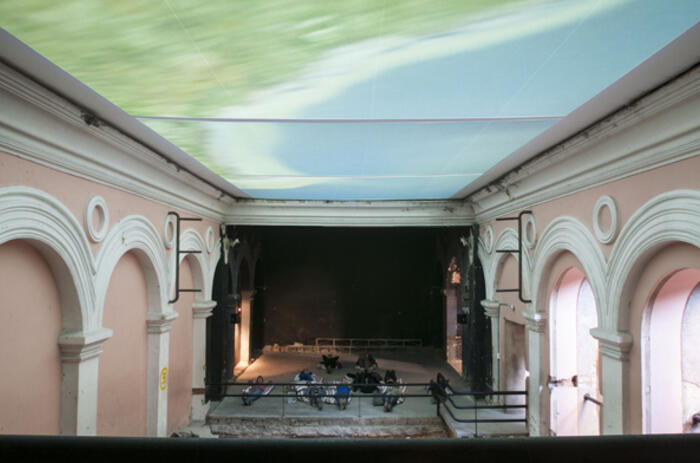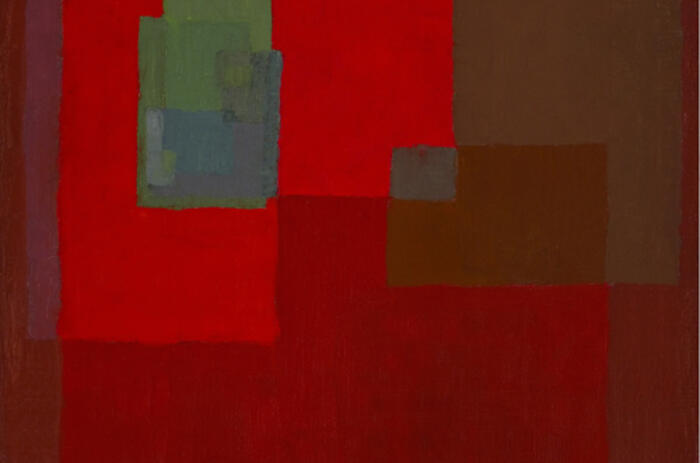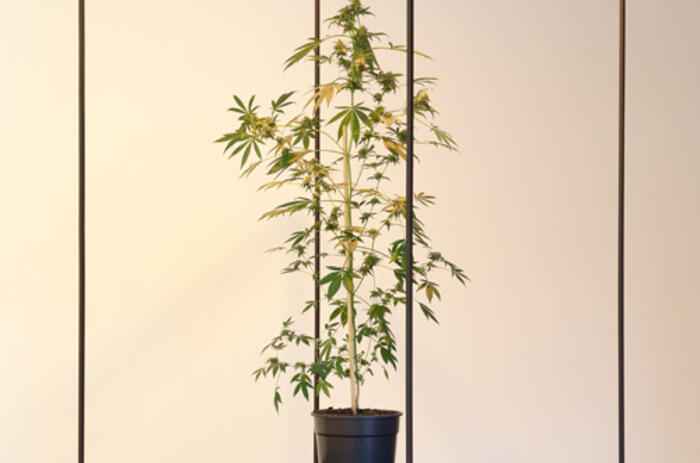Reviews

_EXTRANJERO_
“Extranjeros para nosotros mismos” is the title under which, in 1991, Julia Kristeva inquired into the development of a type of multiracial coexistence in 21st-century Europe.

_Violent Frames_
In the center of Santiago de Chile, González & González gallery exhibits the work of four of the most important Latin American artists of our days.

_Open Work:_ An Invitation To Do It Yourself
Looking at a decade of artistic production over forty years ago, Open Work in Latin America, New York & Beyond: Conceptualism Reconsidered, 1967-1978 features thirty-six artists affiliated with Latin America, making work on the continent, abroad or in a situation of transience.

Andrés Monteagudo
In Retroceso el sueño dormido, Andrés Monteagudo (Spain, 1970) prolongs the influence of his native city, Granada, on his childhood, through a poetics of the white cube that dissolves the boundaries between art and life.

Miler Lagos
The scene Rompimiento de Gloria, in which a light source irrupts from behind some clouds, dominating the space and transforming it into a place for contemplation characteristic of the Baroque, provides the title for the exhibition presented by Miler Lagos at Espacio Odeón.

Lydia Azout
Throughout more than thirty years of conscientious artistic career, the work of Lydia Azout (Bogotá, 1942) has been characterized by her constant research into ontological problems that define our place on the planet as well as our relationship with nature.

Alberto Borea
On an unseasonably warm fall day in October, on a Friday afternoon, I am at Y Gallery, where I am to meet Alberto Borea (b. 1979, Lima, Peru) to tour his second solo exhibition in New York titled “ Because of Construction” .

Mateo López
A collection of diverse actual and simulated objects, in which the only conceptual convergence consists in their being the recordings of a journey midway between imaginary and real, compose Mateo López’s exhibition, titled “Avenida Primavera, Casa No. 2”, at Casas Riegner Gallery, in Bogotá.

Concerning the Spiritual in Art
“Concerning the Spiritual in Art”, Aluna Art Foundation’s inaugural exhibit for this alternative curatorial space that opened its doors in August, showcased a collection of works by a group of artists both renowned and unrepresented within the Miami art scene, that reflect their search for “the spiritual in art”.

Carlos Cruz-Diez
The 2010 retrospective exhibition “Carlos Cruz-Diez: Across Space and Time” at the Museum of Fine Arts Houston literally left a mark in the city. In front of the museum his designs have remained painted on the crosswalks.

Rafael Vega: Beyond Literalism
I’ve been teaching, on and off, for about fifteen years, and frequenting art schools and university art departments as a visiting critic or the like for a good deal longer than that.

Roberto Diago
The first New York exhibition for Cuban artist Juan Roberto Diago Durruthy opened this month opened in September at the Magnan Metz Chelsea gallery. Described as distinctly “Afro-Cuban” the exhibition, “Entre Líneas | Between the Lines”, appears at first glance as a standard series of abstract grid canvases center-hung throughout the walls of the large two roomed space.

Iran do Espírito Santo
The exhibition of Iran do Espírito Santo (Mococa, Sao Paulo, 1963), featured simultaneously with that of Leda Catunda in another level of Ruth Benzacar Gallery, displays (strategically) a series of sculptures and an immense mural painting.

Clemencia Labin
The New World Museum of Houston is one of the city’s premier exhibition spaces. It is modern, tasteful, and although it has only one very spacious room, it lends itself perfectly for one-person shows.

Jonathas de Andrade’s Micro-histories
For one of his most recent works, entitled O levante (The Uprising), 2012 − the brute material for which is still in the process of being structured in order to provide it with a definitive format − Jonathas de Andrade organized the 1st Horse-drawn Cart Race in the center of Recife, where he lives.

Miguel Rio Branco
This is not the usual Miguel Rio Branco exhibition. While the artist has explored female sexuality in more or less explicit contexts throughout his work, be it in his feverish exploration of brothels in Salvador or the depiction of cheeky schoolgirls of Tokyo, the artist delved into the idea of womanhood and feminine eroticism in his latest solo show at Millan gallery in São Paulo.

Ana Tiscornia
“Other impertinences”, the most recent solo show of Ana Tiscornia (born in Uruguay in 1951 and living in New York since 1991) continues her deeply rooted dialogue with memory and oblivion, through different channels.

Rivane Neuenschwander
Out of reach is an idea running through Rivane Neuenschwander’s latest works. After her solo show at New York’s New Museum, where the artist ripped a wall to shreds in search of hidden microphones, her new series of pieces now on show at Fortes Vilaça’s warehouse space in São Paulo seems to advance further into the idea of attaining what is hard to get.

Pedro Tyler
This fall Sicardi Gallery is featuring “Not Space Nor Time”, the first United States solo show of Uruguayan artist Pedro Tyler. The works included in this exhibit pose a reflection on art and death.

Teresita Fernández
Teresita Fernández’ latest exhibition “Night Writing ” is a natural evolution of her larger artistic practice that has for some years focused on the world’s natural elements as its central theme: from Bamboo Cinema, 2001, in collaboration with Public Art Fund to Fire, 2005, acquired by San Francisco Museum of Modern Art in 2007 to Stacked Water, 2009, an installation at the Blanton Museum of Art.

Villa Datris
The opening of a space devoted to sculpture is quite an unusual event in France. Daniele Marcovici and Fourtine Tristán’s decision to create at Isle-sur-la-Sorgue, near Avignon, a foundation specializing in contemporary sculpture, in the diversity and the evolution of this artistic medium whose richness matches its multiplicity, was most favorably received.

Abraham Palatnik
According to art history, the kinetic movement began in Paris in 1955, with the mythical exhibition “Le Mouvement”, organized at Denise René Gallery, an unquestionable fact which marks the origin of a movement that assembles European and South American artists.

Lucas di Pascuale
Lucas Di Pascuale (Córdoba, Argentina, 1968) gained attention when he began to install a gigantic version in iron of (the word) López (2007-2011), even in front of the Centro Cultural de España in Buenos Aires.

Julieta Aranda:
Revisiting the paths followed by the speculative variability that has gradually shaped the ever-ongoing work of Julieta Aranda, I can anticipate that we would be lost in simplifications and end up misunderstanding her movement and her drive if we intended to inscribe this work into a moment, or tried to approach it as if it were an arrow that we could immobilize in the middle of its flight.

Gyula Kosice
Like every day for the past seventy years, Gyula Kosice begins his work in his studio, which he currently shares with a museum that reflects his extensive artistic trajectory.

Liliana Porter
Art is an excellent platform from which to experiment with narrative, since in art, languages and their reading are constantly modified. Each particular artist alters the conception of what an artwork is; of what is the story that is being told is, and how it is received.

Ana Sacerdote
The work of Ana Sacerdote (Rome, 1925), an artist almost unknown here who migrated to Argentina when Fascism caused havoc in Italy, caused surprise in the Buenos Aires art scene.

Theo Craveiro
In the dark, Theo Craveiro swims to a distant shore. It is night, and the only thing visible on the horizon are faint spots of light that flicker along a frail skyline.

Matías Duville
Like the ancient itinerant painters, Matías Duville (1974) recounts his investigations on the landscape through some fifty drawings, a video, an object and some photographs which are projected together with a soundtrack. The exhibition is called «Safari».

López-Ramos
The Situationists gave the name of détournement to an artistic practice which consisted in taking a consumer good and transforming it into an art object, in such a way that it would deny its own character as merchandise, thus subverting the imperative to consume that characterizes contemporary capitalism.

Horacio Zabala
Argentinean artist Horacio Zabala opened “Reiterations” , his first solo exhibition at Henrique Faría Fine Art, with an investigation of acts of censorship and how they impact the relationship to one’s surroundings and nationality .




